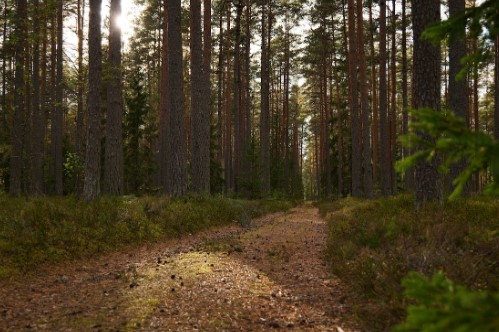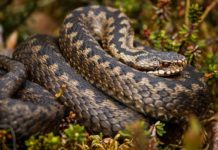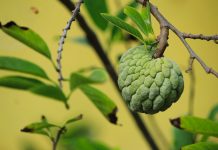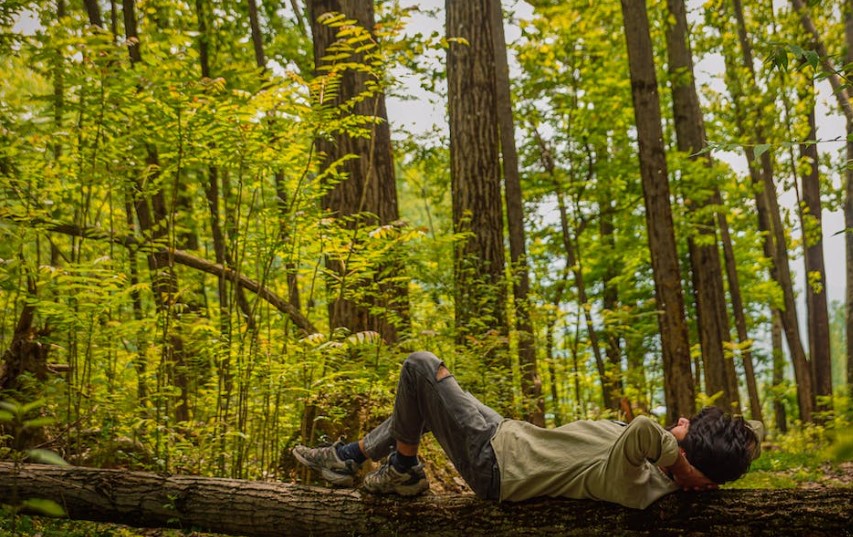Why is Sea Blue? This is a very odd thing because the sea is also wet and spread out under the sun. It ought to be green with plants as is the land, but it is not. There are murky coasts and estuaries, the green hard waters of stormy channels, the fog-covered silvery-grey of ocean banks. But the deep sea, the open sea, most of the sea, is blue. This strange blueness of the sea can tell us many things.
An explanation for the color of the sea is simple enough. There are not enough plants in the sea to make it green, so we are left with the color of pure water under the sun. The light that passes through perfectly clear water is absorbed bit by bit, it’s the energy dissipated as heat as it travels until at last all of it has flowed into the sink of heat and there is utter blackness.
But the colors of white light go progressively, one at a time. The low-energy wavelengths that we call “red” go first, then, in turn, the more intense parts of the spectrum orange, yellow, green, and finally the various shades of blue. Only blue light reaches a few hundred feet down, and it follows that any reflected light that has made a double journey from the surface to the depths and back is blue. And so, the sea is blue.
But the real reason that the sea is blue is that there are not enough plants in it to make it green. And this is one of the oddest of the odd things about our world. Why are the great oceans not green with plants? We can get a first hint of where to look for our answer by reflecting on those few places in the sea that in fact are green, the shallow banks such as the Dogger Bank, or regions of great upwellings such as those on the Peruvian coast.
These are the sites of the great fisheries, and the waters are murky green with plant life. The fisheries themselves attest to the rich productive qualities of these scattered places, and the green murk bespeaks high fertility. Indeed, high fertility, in the simple chemical sense, is the explanation for both the fisheries and the green murk.
The waters of banks and upwellings are well-supplied with chemical nutrients so that the tiny planktonic plants of the sea thrive abundantly, turning the water into a green soup in which animals wallow, to the eventual well-being of fishermen.
Where the sea is unusually fertile, tiny plants multiply and the water becomes green with their bodies. But most of the sea is not fertile; it is a chemical desert. Potassium, phosphorus, silicon, iron, nitrates, and the rest are always present in seawater, but in low concentrations.
By the standards of agriculture, the open sea is hopelessly infertile. And if the sea is infertile it is perhaps not unreasonable to expect that plants will not grow there very well, which is presumably why there are so few of them.
So far, we seem on safe ground, but there is a very large catch to the argument. Everything depends on the fact that the plants of the sea are tiny. In very fertile water (a polluted estuary is the best example) the tiny plants multiply until the water is pea-green with their bodies.
But if the water is a nutrient-poor desert like the great oceans, then there are only enough chemicals in the lighted upper layers of the sea to make very few plant cells. The water is then essentially empty, the sun plunges down to the depths, and the water glows blue. But all these only follows//the plants are tiny.
Suppose there were large plants floating on the surface of the sea, plants that covered it with layers of leaves as the rainforest trees cover the tropical land. These large plants would not have to worry about the thin supply of nutrients in the water any more than the rainforest trees of the last chapter are stopped by the even thinner supply in the red tropical soils.
Large plants can collect, accumulate, and hoard nutrients. How easy it ought to be for a large plant in the sea. Deep down below the lighted surface of the sea, there are, in fact, almost unlimited nutrients, for the great oceans are some five miles deep in the middle. The fertilizer problem is one of concentration. In the few tens of meters at the top of the ocean, where the light reaches, the plants must grow.
Hence, there is a local shortage of nutrients, but the potential supply underneath is truly enormous. A large plant at the surface would soak up nutrients, just like a large plant on land. More nutrients would then diffuse up from the depths to be similarly collected. And so on. Thus, if there were large plants in the open sea, the dilution of nutrients would not matter.
Now our inquiry comes close to Darwinian realities. The sea is blue, not so much because it is infertile but because there are no large plants growing there. Large plants would overcome the infertility of the surface water by gradually collecting nutrients as they filtered up from the depths below.
Large plants would become the dominant factor in the life of the sea as they are of the life of the land, making a massive shade of the spaces below them, forcing all food chains of animals to start with types that could bite out chunks from foliage. But no large plants live in the open sea. They can grow around coasts as do the kelps.
The giant kelps of the American Pacific, Macrocystis and Nereocystis, are said to be the longest vegetables in the world. But none of these large sea plants makes it out to a floating life in the open sea. For some reason, the niche or profession of “large-planting” is not possible in the open sea. Why? This is the fundamental Darwinian question behind the blueness of the sea.
Oceanographers have long known that there is something odd about the absence of big plants from the sea, but they have missed the grand Darwinian question. They never asked themselves, “Why can’t the plants be big?” Instead, they looked for the advantages of being small, counting the blessings of smallness, and expecting to find their answers in this way. But you cannot get all of the answers like that.
Consider some of the so-called advantages of being small, particularly those based on the surface area. A small object has a much larger surface in proportion to its volume or mass than a big one. One result of this is less trouble with the sinking problem, since the relatively large surface offers more friction, slowing the sinking rate. On the other hand, if you have a bladder of air or oil, you do not sink at all, so why bother being small?

Another is that the large surface of your little body can be used to soak up scarce nutrients. But there are ways of having a large surface area other than being tiny; by being convoluted or sponge-like, for instance. Rain-forest trees manage with a mat of hairs, even in mud and gravel let alone water. A spongy giant of an ocean plant would find soaking up nutrients easy; then it would be able to hoard its nutrients even as land vegetation does.
I have read in an oceanographic text that small entities use nutrients “efficiently.” This means that “turnover” is efficient if one thinks of the oceans as a banker thinks of a company that “turns over“ its capital quickly. But it is a strange sort of efficiency that keeps the oceans as a poorly productive desert.
If the ocean plants were large, they would soak up nutrients from below and make the ocean desert bloom like the lowland tropics. The “efficiency” of production would then be much greater. So why be small?
There must be some advantage in being small, and we can best find what it is by looking for the disadvantage of being big in the sea, and whatever this disadvantage might be it surely must be overriding. There are big plants everywhere else, on all kinds of land surfaces and in every shallow patch of the sea along its coasts. It is only in the open sea, where they would have to float that there are no big plants. So, the answer to the problem must lie in a floating way of life.
Why do small plants make a success of floating in the sea whereas big ones do not? The answer stares us in the face. If a plant floats, it drifts, and if it drifts, it is soon blown away from where it wants to be. There must be some way to get back. A big floating mass kept up by air bladders or oil floats would never make it home after the first storm or the constant push of the current had taken it away.
But it is easy to imagine ways in which tiny plants might arrange for their returns. The most obvious way is by letting themselves sink because the surface of the ocean is always being stirred. Water always moves into a patch of the sea as fast as water is taken away and for every leaving current, there must be a current returning.
It seems likely that small plants can thrive in the open sea by following the currents around. It is possible, too, that they disperse in the air as well, being kicked out of the waves in spray and blown about the world’s oceans. Tiny plants can ride the currents to stay in home waters or travel the oceans to get back there. Large floating masses of vegetation cannot.
So, the final hypothesis to explain Why is Sea Blue? And what reasons for the blueness of the sea are that large plants are excluded from it not by short commons in nutrients, but by the restless motion of the waters that would sweep them all away never to return. As it happens, fate has provided one intriguing test for the hypothesis that there is one place in our contemporary ocean from which floating things are not swept away: the Sargasso Sea.
The Sargasso is at the center of a slow but enormous gyre, an oceanic whirlpool that gathers floating debris to its middle. This was so dangerous an area for sailing ships that legends have grown of ancient vessels, trapped by the remorseless swirling waters, rotting together far out in the Atlantic.
Columbus had his own grim meeting with the Sargasso, saving himself from the mutinous temper of his crew only by scooping a crab off the weed that floated alongside and claiming that the weed with its crab meant that land was near. But the land was a long way yet. The weed was the big floating brown alga we call Sargassum, and it floated thickly over the surface of the Sargasso Sea because the gyre held its population in place.
Sargasso weed floating about as straggling fragments can be found in many of the world’s oceans as can fragments of other species, oiFucus, and Ascophyllum, of any of the anchored coastal plants that bear floats and that, might be tom up by storms. These floating fragments survive for a while as they drift, but they are all doomed.
They are not adapted to oceanic life, and they cannot reproduce as they float about. Hence, they leave no offspring; and they die. But in the Sargasso Sea, things are different. There the local species of Sargassum lives its whole life, reproducing, and persisting generation after generation.
Evidently, this gyre in the oceans has persisted long enough for natural selection to produce from the chance debris of floating coastal algae a species able to carry on its life cycle as it floats. And the plant has done this in a patch of water notoriously unproductive in the sense of holding few nutrients.
The story of the sargasso weed leads us to believe that where it is possible for floating plants to stay put in the sea, we shall find large, floating plants. That we do not find them all over the oceans is because the oceans do not keep still. Natural selection then forces extreme smallness on the plants that are there, for the tiny ones are those best able to disperse about the seas.
If the surface waters are provided by conveyor currents of nutrients in upwellings. Or run-off from the land, or with delicious rivers of garbage like those that pour from The Tiber, the Hudson, or the Medway. Then the tiny plants will so multiply that the blue of the ocean is banished, and a green or turbid murk tells of vibrant life.
But if the sea is a nutrient-poor desert, like most of the world’s oceans, then the tiny plants cannot be very numerous. There is then neither a canopy of floating vegetation nor a soup of tiny algae. Sunlight plunges deep into the water, its fewer intensive rays being rapidly extinguished the while. Only the shorter wavelengths make the double journey to and from the depths Why is Sea Blue?

Reference: Paul Colinvaux
Related Reading!
- Brimham Rocks – Balancing Rock Formation of Yorkshire
- Wave Rock, A Strange Rock Formation in Australia
- The Shiprock New Mexico
Affiliate Products
-
How One Woman Discovered the Female Fat-Loss Code Missed by Modern Medicine And Lost 84lbs Using a Simple 2-Step Ritual That 100% Guarantees Shocking Daily Weight Loss
-
60 Seconds Habit! That Reversed Type 2 Diabetes and Melted 56 lbs of Fat
-
Boost Your Energy, Immune System, Sexual Function, Strength & Athletic Performance
-
Diabetes Remedy # 1 Mega Offer for 2019
-
7 Instant Confidence Technique with Women Program
-
Fan Victor – The Ultimate Fantasy Sports Plug-in
-
Reservation Master is a reservations software package developed for use in Hotels, Motels, Guest Houses, Bed and breakfasts, Lodges & Inns, and Campgrounds worldwide.






